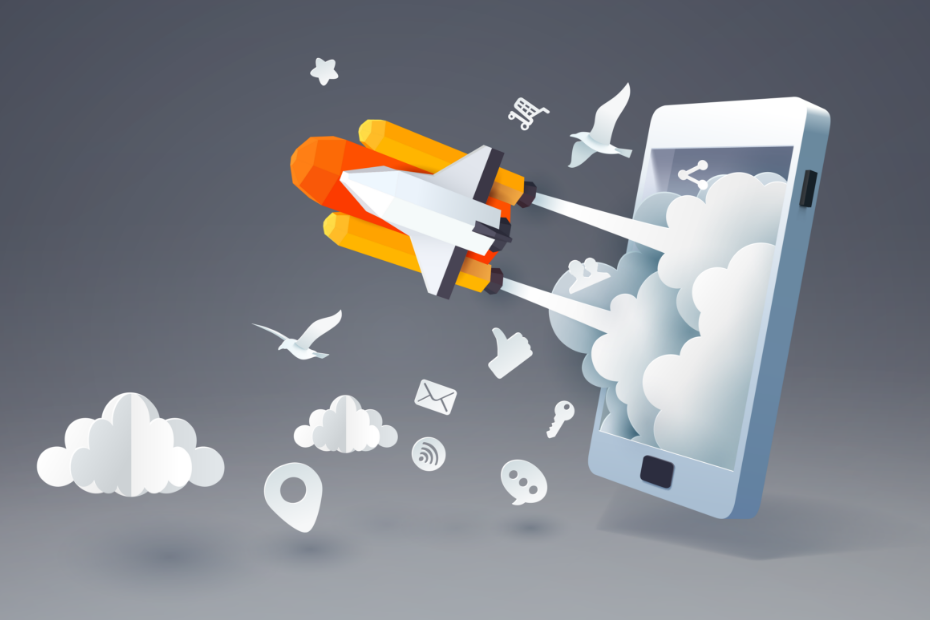
In the tech industry, staying updated with the latest mobility trends is more than a luxury – it's a necessity. As technology continues to evolve at breakneck speed, businesses that fail to keep pace risk obsolescence. For those associated with software development and related sectors, it's crucial to react to the trends among the first.
We have delved deep to identify the top 10 mobility trends to watch out for in the tech industry and explore how these trends are impacting software development. Let's take a look!
Our top 10 mobility trends
1. 5G connectivity
The anticipated full-fledged arrival of 5G is here, promising lightning-fast connectivity, reduced latency, and a more seamless user experience. The potential applications range from smart cities to augmented reality and everything in between.
2. Foldable devices
Foldable smartphones and tablets are not merely a novelty anymore. With major players launching their foldable device versions, they are set to redefine the device market with increased screen space without compromising portability.
3. Edge computing
As IoT devices proliferate, edge computing is expected to gain traction. By processing data closer to where it originates, edge computing can reduce latency, boost speed, and ensure more efficient data processing.
4. Augmented Reality (AR) & Virtual Reality (VR)
With hardware becoming more affordable and software more innovative, AR and VR are poised to revolutionize several industries, including gaming, healthcare, and education.
5. Wearable tech evolution
Beyond smartwatches, the wearable tech space is expanding to include smart rings, smart glasses, and even smart clothing. These devices offer convenience, health tracking, and a blend of the digital and physical worlds.
6. AI-driven predictive maintenance
In industries where machinery and equipment play crucial roles, AI-driven predictive maintenance can forecast when a machine is likely to fail. This proactive approach can save businesses time, money, and potential downtimes.
7. Autonomous vehicles
Self-driving cars have been a buzzword for a while, but advances in AI and machine learning are inching them closer to becoming an everyday reality. Beyond cars, expect to see autonomous drones, boats, and more.
8. Cross-platform app development
Given the diverse range of devices in use today, developers are leveraging frameworks like Flutter and React Native. This ensures apps work seamlessly across platforms, providing users with a consistent experience.
Read on: Mobile App Development: Best Practices And Tips For Your Business
9. Enhanced voice assistants
Voice assistants are getting smarter, thanks to advancements in NLP (Natural Language Processing) and AI. Beyond mere voice commands, they're integrating more deeply with our devices, anticipating our needs, and offering more personalized assistance.
10. IoT device integration
The Internet of Things (IoT) isn't new, but the degree of its integration is. As more devices become "smart," expect a more interconnected living and working environment, with devices communicating seamlessly with each other.
How mobility trends impact enterprises and software development
These emerging trends aren't mere technological advancements—they're transformative shifts that redefine operational and developmental frameworks. Here's how they influence the landscape for enterprises and the software development community:
1. Adaptable infrastructure
With the 5G rollout and the advent of edge computing, organizations must re-evaluate their current infrastructures. Networks need to be more flexible, scalable, and robust to accommodate increased data velocities and localized computations.
2. User-centric design
As foldable devices, AR/VR, and wearables become mainstream, developers are pressed to prioritize designs that are user-centric. Crafting interfaces that adapt intuitively across diverse screen dimensions and formats is pivotal.
3. Skill development and training
The influx of new trends necessitates the acquisition of new skill sets. Companies should look into upskilling their teams or collaborating with niche experts, especially in realms like AR/VR development, edge computing, and AI-driven solutions.
4. Prioritizing data security and privacy
An expanding IoT network and enhanced interconnectivity pose significant security challenges. Companies must invest in state-of-the-art security protocols, ensuring software development is anchored in top-tier security practices.
5. Achieving seamless integration
Users now expect integrative experiences. Consequently, developers must produce solutions that ensure smooth interoperability between devices, platforms, and even disparate software systems.
6. Adopting a proactive maintenance stance
The emergence of AI-driven predictive maintenance offers businesses an opportunity to preemptively address issues, shifting from a reactive stance to a proactive one, both in equipment upkeep and software troubleshooting.
7. User experience (UX) as the key differentiator
Irrespective of the device or platform in use, UX remains supreme. Ensuring applications are responsive, intuitive, and crafted for an exceptional user journey is paramount.
Read on: Enterprise UX And How It Impacts Your Business
8. Revamping business models
Technological advancements, from autonomous vehicles to sophisticated voice assistants, might necessitate a reconfiguration of existing business models. This could mean deeper integrations, revamped service offerings, or entirely new avenues of revenue.
For software developers, the ability to continuously learn and adapt is invaluable. Staying updated, experimenting with new methodologies, and being agile are crucial in this ever-changing terrain.
Partner up and use the trends to your advantage
The future of mobility in the tech industry looks incredibly exciting, packed with innovations that promise to make our lives more connected, efficient, and immersive. By keeping an eye on these trends and partnering with forward-thinking software developers, businesses can stay ahead of the curve and leverage the power of these emerging technologies.
Yet, you might feel lost navigating those trends. The best solution? Find a tech savvy partner that can help you. Reach out to us and let’s figure out what could give you an edge in the competitive business environment.